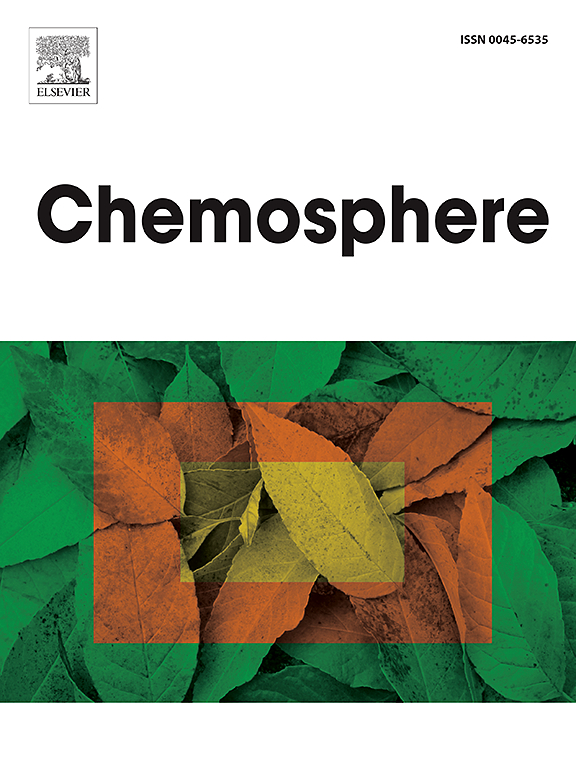beaytlmethodey铵chbride (BAC-12)消毒剂在医院废水处理中的转化行为及毒性评价
IF 8.1
2区 环境科学与生态学
Q1 ENVIRONMENTAL SCIENCES
引用次数: 0
摘要
本工作主要研究了新型beaytlmethodey铵chbride (BAC-12)消毒剂在医疗污水消毒处理过程中的转化行为。臭氧(O3)对BAC-12的降解能力最好,其次是UV/NaOCl,其次是UV/NaOCl。BAC-12在UV/NaOCl体系中的增强是由UV光解、活性氯(RCS)和•OH的共同作用引起的。检测了BAC-12在消毒处理过程中的转化产物,并利用前沿分子轨道和过渡态理论对产物的化学结构进行了合理化分析。生态结构-活性关系(ECOSAR)评价表明,BAC-12的中间体在UV、NaOCl和UV/NaOCl处理下的半数致死浓度(LC50)和慢性毒性(ChV)值均低于BAC-12,生态毒性高于BAC-12。对这些有毒中间体进行O3消毒处理,可显著降低BAC-12溶液的毒性。本研究为BAC-12在医疗废水处理中因不同消毒方法而产生的潜在环境风险提供了必要的信息。本文章由计算机程序翻译,如有差异,请以英文原文为准。

Transformation behavior and toxicity assessment of beaytlmethodeyammonNium chbride (BAC-12) disinfectant during hospital wastewater treatment
This work focused on the transformation behavior of the emerging beaytlmethodeyammonium chbride (BAC-12) disinfectant existed in the treatment of medical sewage during its disinfection treatment. The degradation ability of ozone (O3) to BAC-12 was the best, followed by UV/NaOCl, UV, and NaOCl. The enhancement of BAC-12 in UV/NaOCl system is caused by the combined effect of UV photolysis, reactive chlorine species (RCS), and •OH. The transformation products of BAC-12 in the disinfection treatment were detected, and the chemical structure of products was rationalized by frontier molecular orbital and transition state theory methodologies. According to the ecological structure–activity relationship (ECOSAR) assessment, the intermediates of BAC-12 in UV, NaOCl, and UV/NaOCl treatments had lower half lethal concentration (LC50) and chronic toxicity (ChV) values with a higher ecotoxicity than BAC-12. O3 disinfection treatment of these toxic intermediates can significantly reduce the toxicity of the BAC-12 solution. This work provides necessary information on the potential environmental risks of BAC-12 arising from different disinfection methods in the treatment of medical wastewater.
求助全文
通过发布文献求助,成功后即可免费获取论文全文。
去求助
来源期刊

Chemosphere
环境科学-环境科学
CiteScore
15.80
自引率
8.00%
发文量
4975
审稿时长
3.4 months
期刊介绍:
Chemosphere, being an international multidisciplinary journal, is dedicated to publishing original communications and review articles on chemicals in the environment. The scope covers a wide range of topics, including the identification, quantification, behavior, fate, toxicology, treatment, and remediation of chemicals in the bio-, hydro-, litho-, and atmosphere, ensuring the broad dissemination of research in this field.
 求助内容:
求助内容: 应助结果提醒方式:
应助结果提醒方式:


